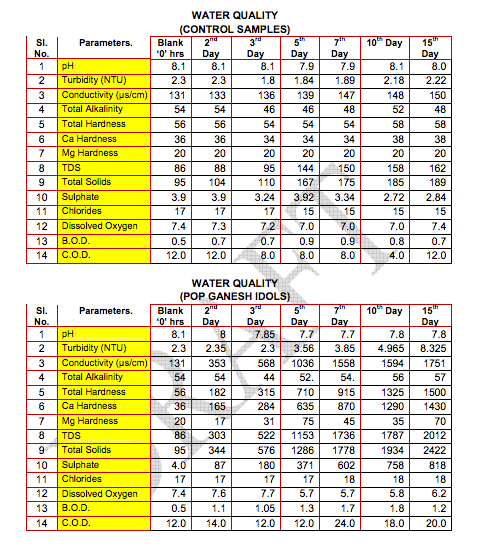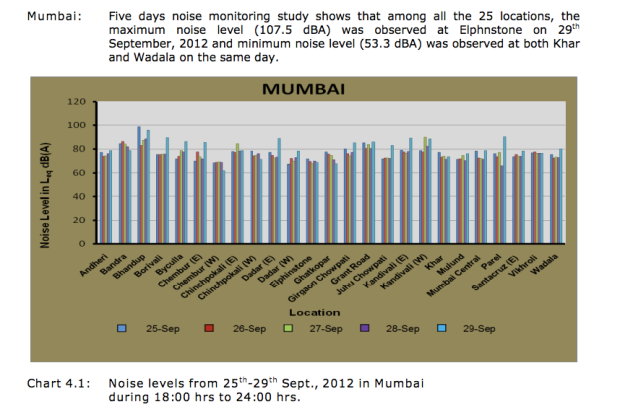Published: September 3rd 2016
Written By : Ronak Pol
September 5th will mark the beginning of Ganesh Chaturthi, a festival that celebrates the birth of Elephant God Ganesha. But this Ganesh Chaturthi lets take some time to look at what we set out to accomplish when we started this journey of “Sarvajanik Ganeshutsav” and what have we ended up achieving.
The Story.
It is widely documented and generally accepted that Lokmanya Tilak changed the way we celebrated this festival, his idea being to create a melting pot of ideas and encouraging unity in a society divided by cast and religious beliefs.
Encouraged by Tilak, Ganesh Chaturthi facilitated community participation and involvement in the forms of intellectual discourse, poetry recitals, plays, concerts, and folk dances. It was a meeting ground for people from all castes and communities at a time when the British discouraged social and political gatherings.
What is going wrong?
The religious scripts, mythology and rituals have attempted to drive the importance of preserving nature by adoring it through the centuries.
Bhagavadgita (9.26) states:
“Patram Pushpam phalam toyam, yo mey bhaktya prayachchati Tadaham bhakt yupahrutam asnaami prayataatmanaha”
Here in lies the spirit of any festival we celebrate, it should help inculcate a sense of mutual respect between us, the environment and the society that we live in. We can all agree that in the bid to make our festivals more glamorous we have left behind the true spirit of any festival, which was to bring the creation closer to the creator.
The idea behind immersing the Ganesh idol on the last day was simple, it depicts the cycle of creation and dissolution. Idols which are created with mud will now return to mud after the festival, encouraging one to think beyond the material life and take some time to evaluate the meaning of our life after dissolution.
In our bid to glorify our sense of devotion toward the creator we have taken steps to destroy his creation.
Idols and water pollution.
Traditionally idols were made from mud, making them “Eco-Friendly” a term that a lot of mandals are trying to associate their celebrations with, but in its true form Ganesh Chaturthi was always Eco-Friendly till we tried to cut costs and make our idols bigger than our inflated egos.
Along with the size of idols the materials used have also changed, we have now moved from mud that was originally taken from nearby water bodies and natural colouring agents derived from plants and turmeric to POP (Plaster of Paris) and toxic chemicals.
Even though POP is cheaper, lighter and easy to mould it is non-biodegradable, making it nearly impossible to completely dissolve in water. The paint used to decorate the plaster idols contains heavy metals such as mercury and cadmium which pollutes water bodies and also has fatal impacts on the bio diversity present in these water bodies.
Ganesh Chaturthi was always “Eco-Friendly” untill we tried to cut costs and make our idols bigger than our inflated egos.
There is overwhelming scientific evidence that documents all that I am saying and let me present some.
How bad is the water pollution problem
To throughly evaluate the effects of POP idol immersion on the environment a study was published by the Maharashtra Pollution Control Board (MPCB) on August 2013 titled : “Post idol immersion impact on water quality to ascertain water pollution potential of idols made up of Plaster of Paris and others”.
They used tap water in a clear container as a control, while they submerged the POP Ganesh Idol in a similar container and took readings at regular intervals.

Draft reasults on MPCB study
Comparison of water quality after immersion of PoP idols on various days after immersion till 15th day revealed steady increase of Conductivity from 131 to 1751µS/cm, Total Hardness from 56 to 1500mg/l, Calcium hardness from 36 to 1430mg/l, Magnesium hardness from 20 to 70mg/l, Sulphate from 4.0 to 818 mg/l, Total solids from 95 to 2422mg/l and COD from 12 to 24mg/l. Dissolved oxygen has shown trend of depletion over the period i.e. from 7.4 to 5.7mg/l on 5th Day.
What all this essentially means is that idols made of PoP are not easily soluble in water. Even after 15th day of immersion the PoP idols do not disintegrate/deform. Further, gradual disintegration of chemical constituents of PoP idols has shown steady increase in hardness and COD and reduction of dissolved oxygen in water. The large-scale immersion of PoP idols may lead to gradual and persistent change of water quality particularly in water bodies such as wells, ponds etc. Having limited dilution factor, therefore may have marked adverse impact on aquatic life as well as natural quality of the receiving water body.
For individuals interested in understanding more about what each of those indicators mean a study by Swapnesh Rangnekar et al published in the “International Journal of Plant, Animal and Environmental Sciences” will prove to be an informative read.
What is the Solution?
Water pollution is one of the most well documented problems when it comes to any festival, similar studies can be found around the country surrounding festivals like Durga Puja and Dashera. Now that all of us including the government acknowledges this problem, we can take steps to find a suitable solution.
The Indian government provided some guidelines for idol immersion, and were issued by the “Central Pollution Control Board” in the year 2010. Another set of guidelines were issued by the “Maharashtra Pollution control board” (MPCB) in 2014 to facilitate better water quality management after the festivities.
I encourage all of you to read the MPCB guidelines and then proceed, there are simple 12 points that will not take a lot of your time.
On reading the guidelines you must have noticed the casual approach and less than authoritative stance taken by the government on the issues, the passive approach is quite evident and I do not blame them.
In Maharashtra alone approx. 68.01 lacks of Ganesh Idols are manufactured, out of which 2.34 Lack idols are of large size and worshiped in Public Ganesh Mandals and 65.67 Lakh idols are worshiped at individual houses, meaning any rash decision like completely banning PoP idols or making any restrictions mandatory can be disastrous for their vote bank.
Other Problems.
Water pollution is not the only problem when it comes to the way we have come to define our festive celebrations – air pollution and noise pollution also reaches concernable levels during this period.
MPCB has also published a report on Noise Pollution that people experience during this period it covers a detailed breakup of how much noise pollution was there in various parts of the state during the period of this study
According to the guidelines published on the MPCB webside acceptable noise pollution levels are as follows

MPCB Standard Noise pollution guidelines
Ambient noise above 85 dB(A) is considered harmful for human beings and the table below illustrated how serious the issue is during the festive season.

MPCB report – “Ambient Noise Monitoring during Ganesh Festival – 2012 “
When it comes to air pollution the literature tends to pay more attention to Diwali but that does not undermine the seriousness of the issue when to comes to this festival.
Conclusion
Understanding why we celebrate a certain festival is the first step to celebrating it in the right spirit. A lot of time, money and energy is spent celebrating festivals while leaving behind the true spirit of celebration. We are gradually moving from a society that respects our surrounding and traditions to a society that ignores everything at the expense of our own notion of happiness. This is not sustainable and will lead to chaos.
Change is needed and will prevail – either drastically when things just come to a halt or though progressive steps in the right direction. This leaves us to decide what route do we want to choose.
At the end of it all I wish you and your family Happy Ganesh Chaturthi!!
Please like, share and comment on this article and tell me
“What do you think about the ways we celebrate our festival?”

This article is so well written, Ronak
LikeLike
Thank You
LikeLike
Very nice, Ronak. Keep it up.
LikeLike
I totally agree with the point of view. But religious practices and their repurcussions on environment are not seen as one event by many people involved in these rituals.
God bless the mother earth and the natural resources. 🙂
LikeLike
I think thought behind the ritual holds more value than the ritual itself! Respect the idea and live your life and you will never harm anything in this world!
LikeLike